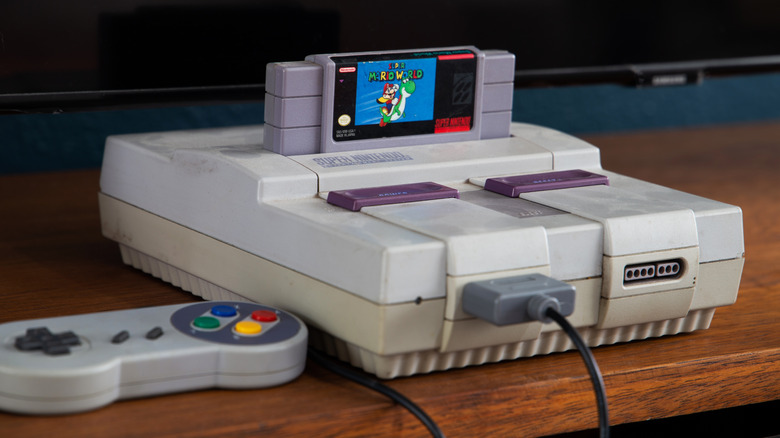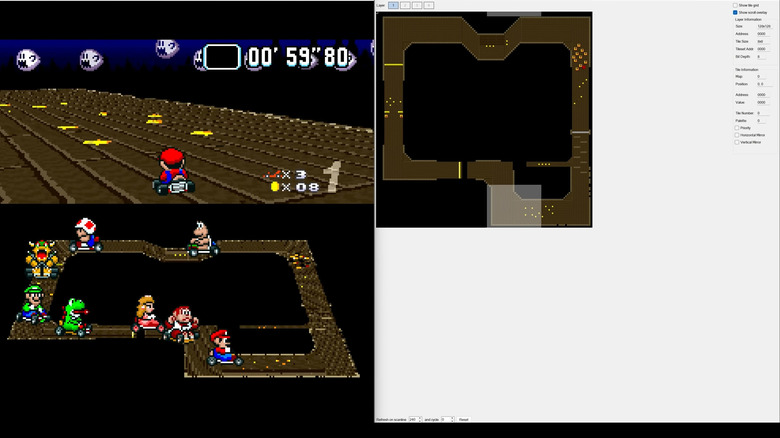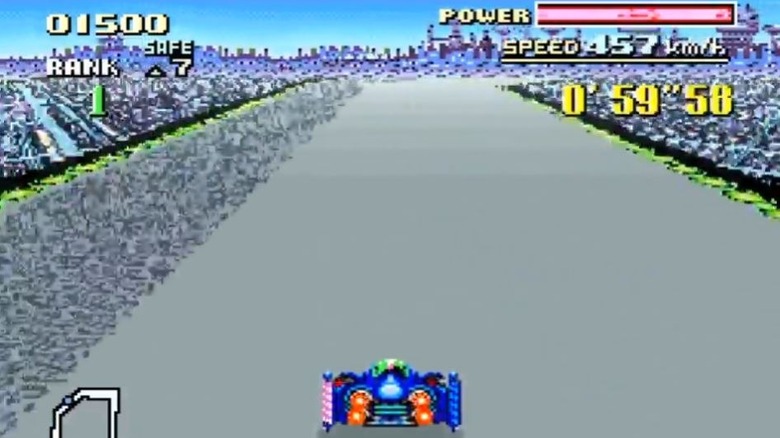The Magic Of Mode 7: The Super Nintendo's Secret Weapon
In the early 1990s, the Super Nintendo Entertainment System, also known as the Super Famicom in Japan, was the premiere home video game console, rivaled perhaps only by the Sega Genesis. The console played home to some of the greatest hits Nintendo ever produced and published, like "Super Mario World," "The Legend of Zelda: A Link to the Past," "Donkey Kong Country," and many, many more.
Using the 16-bit microprocessors that were the style of the time, the Super Nintendo could do some pretty impressive 2D sprite work. However, in a first for Nintendo consoles, and most consoles in general, the SNES wasn't wholly relegated to the 2D realm. While there were only a couple of truly 3D games on the console powered by the Super FX Chip, like "Star Fox" and "Dirt Racer," the 2D games could achieve an impressive facsimile of 3D using the console's secret weapon: Mode 7. Thanks to Mode 7, games reached entirely new levels of speed and aesthetics.
What was Mode 7?
The Super Nintendo featured seven different video rendering modes, each offering a different level of display detail, shown in one to four background layers. Most of the Super Nintendo's games utilized Mode 1, which could display 16-color sprites and backgrounds on two layers plus a 4-color sprite on a third layer. This little trick was the key to the parallax scrolling effect you'd see in games like "Super Mario World," where background elements would scroll at different rates from foreground elements.
Mode 7, however, was the only one of these display modes that permitted advanced visual effects. In a nutshell, Mode 7 allows the Super Nintendo to take a 2D image and apply 3D rendering effects to it, such as scrolling, curving, stretching, and more. By switching to Mode 7, games could transform one of their background layers into an independently moving image, which could be used for gameplay modifications and simple spectacle. Plus, with a bit of creative warping, a 2D image could be changed into a pseudo-3D view, having 2D sprites move around in a flat 3D space. It's kind of like rolling a ball on a treadmill.
What games utilized Mode 7?
Perhaps two of the most iconic Super Nintendo games to utilize Mode 7 were Nintendo's classic racing games, "Super Mario Kart" and "F-Zero." Both of these games operated on a similar principle –- a 2D image of a track would be transformed into a scrolling 3D surface, while the sprites of vehicles would be placed on top to race around. By adding simple collision modifiers where the track's walls and hazards are, you could create the illusion of a 3D track, even if it's not actually 3D.
Besides those games, Mode 7 was also used to great cinematic effect in tons of other Super Nintendo games. RPGs like "Final Fantasy VI" and "Secret of Mana" would use Mode 7 to render their overworld maps, giving them a much grander scale than the usual overhead view would. "Super Castlevania IV" features a famous stage set inside of a giant rotating cylinder; this, too, is the result of Mode 7, transforming a flat background image into a rotating tube. Mode 7 could even be used on moving sprites, such as the boss fight against the monstrous Jaws in "Super Turrican 2."
Obviously, gaming hardware is well past Mode 7, as we can easily create real 3D instead of facsimiles. However, the distinctly scrolly 3D effect is still fondly remembered and often deliberately invoked in retro-styled games and remakes such as "F-Zero 99."


